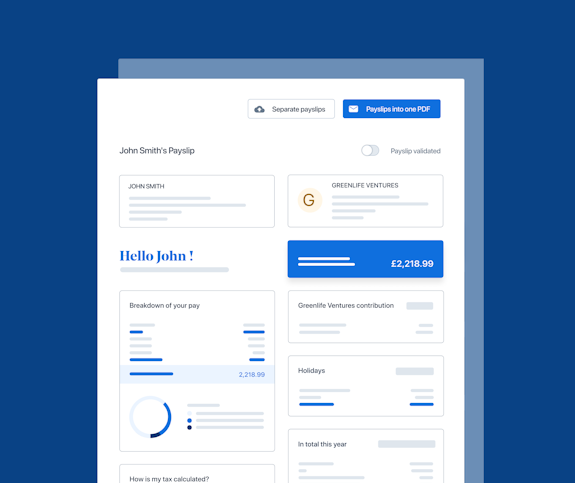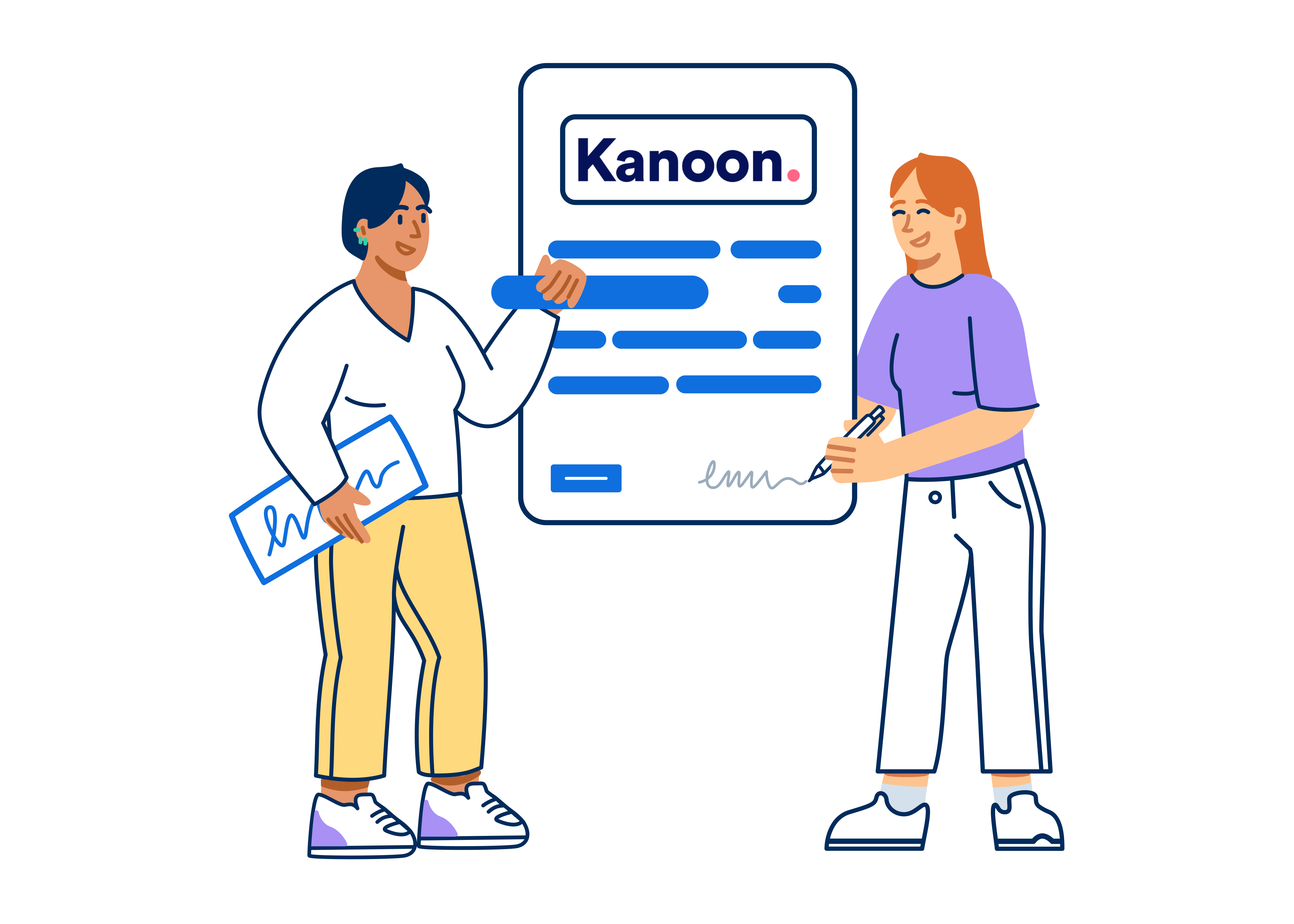- Blog
- |People management
- >Employee wellbeing
- >Employee performance management explained
What is Employee Performance Management?


There’s no one-size-fits-all definition of employee performance management here in the UK. At the highest level, we can sum it up as a set of systems and processes that balances people development & enablement with achieving an organisation’s strategic goals.
This ongoing ‘conversation’ encompasses career progression discussions, promotions, bonuses, and even the dismissal process - all fall under the umbrella of managing performance at work.
Every UK company is different; each will have its own unique way of approaching the review process. In the same way, your company’s culture also plays a part in how this process unfolds. For instance, a more traditional/hierarchical business might take a more bottom-line approach, setting clear and specific targets. On the other hand, a flatter organisation might emphasise collaboration and innovation more, allowing employees to take risks and embrace ‘failing’ as a way of growing and learning.
No matter the style of your company’s review process, managing employee performance involves continuous support - in other words, a constant feedback loop - to help employees achieve their goals and align with the company’s broader objectives.
Who is responsible for the performance management process?
While HR should develop the overarching system and end-to-end process, it’s line managers who are responsible for delivering on this. Typically in the UK, managers schedule annual, 6-month or even quarterly appraisals of their employees, as well as regular 1-to-1s. During these sessions, managers should provide their employees with encouragement, guidance as well as healthy feedback and accountability for their goals.
Why is performance management so important for UK companies?
As part of the employee performance management process, managers conduct performance reviews. But this should all be part of a much greater process promoting continuous conversation between line managers and direct reports, as well as clear role scoping.
The aim of performance management should be to provide continuous support, as touched on above, as well as provide employees with the proper tools to help engage them and refine their skills and competencies. In other words, employee performance management helps individuals and teams improve performance so they can better contribute to the organisation’s success.
What are the benefits for your company?
Employee performance management isn’t just important for staff; it can also greatly benefit your company, resulting in:
Higher talent retention
Talent is a valuable asset and can be expensive to replace. Without clear goals or opportunities for career development and progression, employees get bored, tired and disengaged. Giving employees the opportunity to work towards clear goals independently is one of the best recipes for employee retention.
Faster problem solving
Whether due to competency gaps or lack of motivation, under-performance can be a drain on even the best of companies. A strong performance management process allows for quicker identification of under-performers so you can find ways to support and re-engage these. It’s important to note there can be many reasons for low performance, including burnout, lack of training, bereavement and mental or physical health issues. It’s vital that any performance-related discussions remain human-centred and leave room for empathy and understanding.
Stronger talent development
Finally, managing employee performance allows you to identify team members with high potential early on so you can define their next progression steps. Career development chats are a great way for managers and employees to discuss what’s going well and what their next steps might be in terms of promotion or further specialisation. All this adds to your organisation’s competitive edge.
What are the benefits for employees?
Just as there are benefits for your company, there are certainly ones for your employees, too. Managing performance at work can lead to:
Happier, more engaged employees
‘Do a job you love and you’ll never work another day in your life’ or so the old adage goes. But let’s face it: no job is ever perfect. For most employees, work is a means to an end in order to earn enough income so we can build a life we enjoy. And that’s perfectly OK. Still, satisfaction and engagement are essential factors in the mix and can significantly add to an employee's sense of happiness in and out of work. An engagement model that helps employees inch closer to the goals and fulfilment they’d like to achieve, which in turn can make them feel more satisfied.
Clearer areas for improvement
Another great benefit of a strong performance management process for employees is that it can shed light on areas for improvement. Often a weakness comes down to a lack of competency that can be easily filled with more training and support. Coaching can be an effective tool here, as well as skills development courses (as long as employees engage with these in a meaningful way).
Better crisis support
We’ve all had times in our careers when things didn’t go as planned. Whether because of external factors (e.g. mental health issues or bereavement) or simply a workload that becomes too overwhelming. A solid performance review system means an employee in crisis can be detected much earlier, giving line managers an opportunity to swoop in and provide the support necessary, whether that’s helping them delegate tasks better or listening empathetically to what’s going on.
Now that we have a better understanding of the importance of a strong employee performance management programme let’s take a look at what different stages are involved in setting one up.

What are the stages of the employee performance management process?
In the UK at least, classic performance management, can be boiled down to five essential stages - planning, monitoring, developing, rating and last, but certainly not least, rewarding. Of course, these stages might look different from company to company depending on culture and strategic priorities. But if you’re looking to update your process or develop a brand new performance management program, these stages can be a good starting point.
So, what are the five stages of performance management, and what do they involve?
Planning
Before you can start assessing their performance, employees need to understand what it is they need to achieve in the first place.
The planning phase allows managers to clearly scope out roles in a specific way and what’s required in each of these to be successful. If you’ve not yet hired people for certain positions, then this should be established through job descriptions so you can attract the right candidates.
Once hired, however, both employees and managers will need to reconfirm these expectations and align on any new ones. Active participation from employees during this stage is crucial. After all, you want them to feel engaged and empowered within this process and inspired to take on new responsibilities. At the same time, you’ll want to build in some flexibility in case the company’s goals change.
Monitoring
Once clear role expectations have been set, you’ll be able to start monitoring employee performance. Both HR and managers should be involved throughout this stage, conducting regular and consistent feedback sessions with employees so they can adjust and continue to make progress on their objectives.
Engage in this feedback loop consistently, and it becomes much easier for managers and employees to identify problems early on and course correct. Employee performance management software can be really useful during this stage and should be used in tandem with face-to-face discussions.
Developing
After a period of monitoring, there will come a point when managers and HR need to sit down and review all the data and information they’ve gathered during the previous stage.
This is where you can begin to spot general trends as well as pinpoint where there are issues of underperformance. Is it an entire team, or is there one particular person struggling? Is there a need for additional training surfacing or perhaps for performance or leadership coaching? You’ll then want to start gathering ideas for how to address these specific needs before moving into the final stages.
Rating
Most managers and employees will recognise this as the performance review appraisal stage. At a minimum, employees should be graded (or rated) at least once a year. Not only will this help them quantify their performance, but it will also help them understand how much value they’re delivering for your company and whether this needs to be adjusted. 360-degree feedback or peer review can be especially useful at this stage of management of employee performance, allowing employees to see themselves in multiple mirrors and get a sense of where they may have performance blindspots.
Rewarding
Finally, don’t forget to reward your employees for their hard work, especially those who have outperformed or exceeded expectations for that year. There are many ways you can do this, whether through a raise or promotion or simply highlighting their achievements with the wider team. You could even hold an employee appreciation day. However, if you decide to recognise your employees, make sure it’s aligned with your organisation’s values and that the gesture is meaningful.
You’ll also want to take the time at this stage, however, to make more difficult decisions if you’re dealing with an underperforming employee. Remember that not all underperformance needs to end with dismissal - if you’re aware of a role or cross-function move that could be a better career fit, you might want to explore these options with your employee first.
More performance management best practices and tips
Look at what is (and isn’t) working
Already have a review process in place? Then there are probably a few things your company’s already doing great. Building a performance management process doesn’t necessarily mean you have to start from scratch. But it’s important to take a beat and identify what is and isn’t working.
Take some time to conduct a survey to find out what both managers and employees currently like or don’t like about the employee performance management process. You can then take these findings to Leadership so you can make the case for more substantial changes if they’re needed.
Offering training to managers
Your performance management process will only be as good as the person delivering it. Put differently, managers can make or break a review process depending on how well they can engage, motivate and coach their employees. This means it’s essential for HR to offer training in the giving and receiving of constructive feedback.
And remember, just because a manager is highly experienced doesn’t mean you should exclude them from such training - sometimes, the most senior players have challenges giving and receiving feedback or generally managing performance at work.
Involve 360 feedback
Often, feedback can become one-sided or biased, especially if it’s only being given by one single manager. 360 feedback is a method gaining popularity, as it involves offering the employee different perspectives on their performance by collating thoughts, feelings and suggestions from other managers, direct reports or team members. The result is comprehensive feedback that takes into account several points of view which the employee can use to improve.
Engage employees
Finally, it’s important to ensure your employees are fully engaged with the process. We’re well past the days of siloed job functions and authoritarian manager-employee relationships. Performance should be a co-creative process, where both employee and manager take responsibility and accountability for shaping goals and delivering on these.
Tools to help you succeed with performance management
Finally, no employee performance management program is complete without the right tools to help you run it.
Employee performance management tools come in lots of different shapes and sizes. The best ones on the marketplace, however, have a few clear things in common - such as being user-friendly, customisable and built to enable dialogue.
One such tool is PayFit’s performance review feature, which allows employers to quickly set up and run company-wide performance review campaigns. A highly customisable tool that comes with a number of pre-built assessment templates
PayFit’s performance module allows you to set up review cycles and assign managers to review results, all while monitoring campaign progress. Managers can schedule 1-to-1-s, and employees can access assessment forms and documents via their employee portal.
To find out more about PayFit’s performance and other HR modules, you can book a demo with one of our dedicated product specialists by hitting the button below.


A UK 4-Day Working Week - Thoughts On Labour’s Plan

Running payroll - A Guide For New Businesses

The Alabaster Ruling & Maternity Pay - A Guide For Employers

The End Of Zero Hours Contracts? Implications For Businesses

What is the HM Revenue and Customs Starter Checklist


